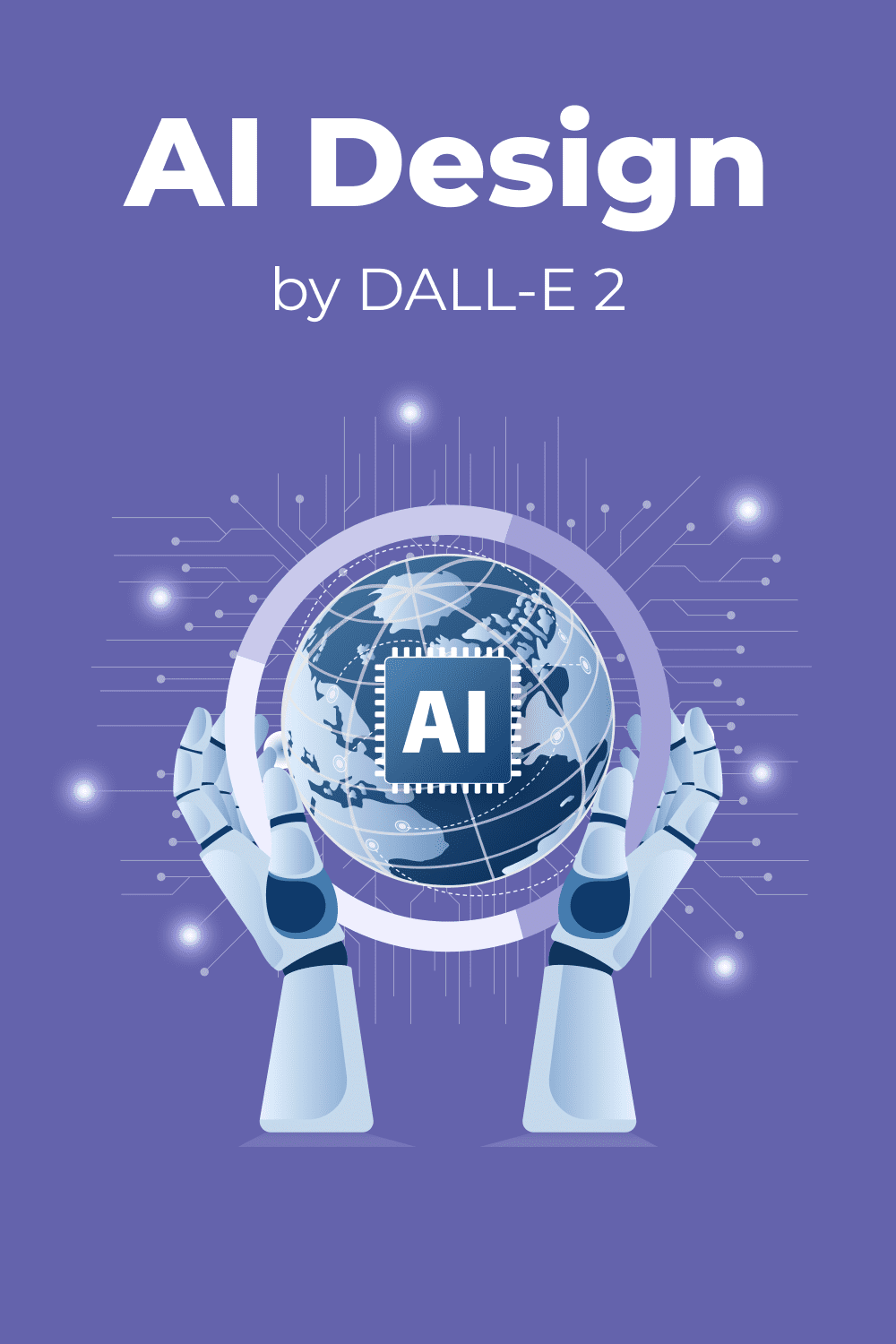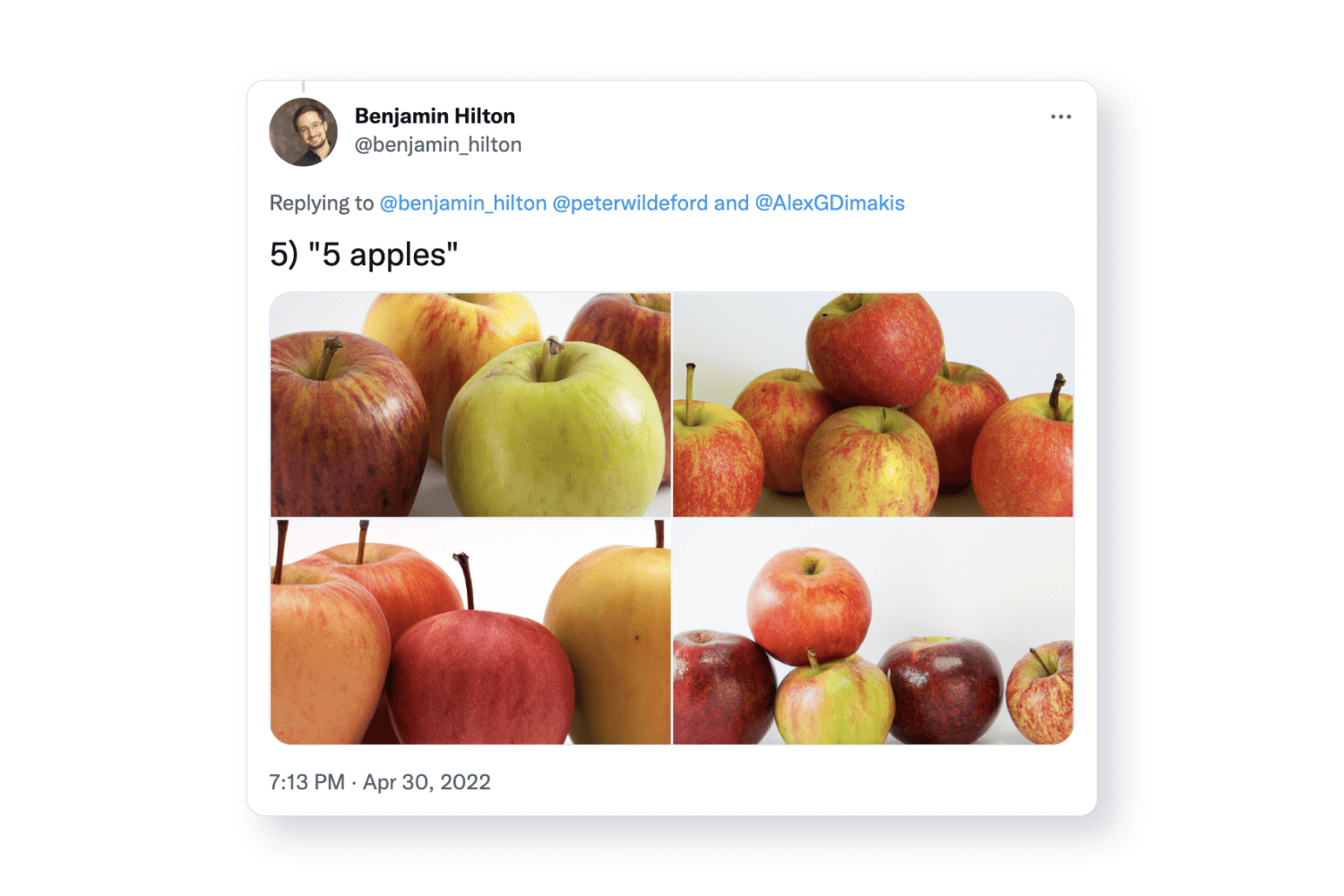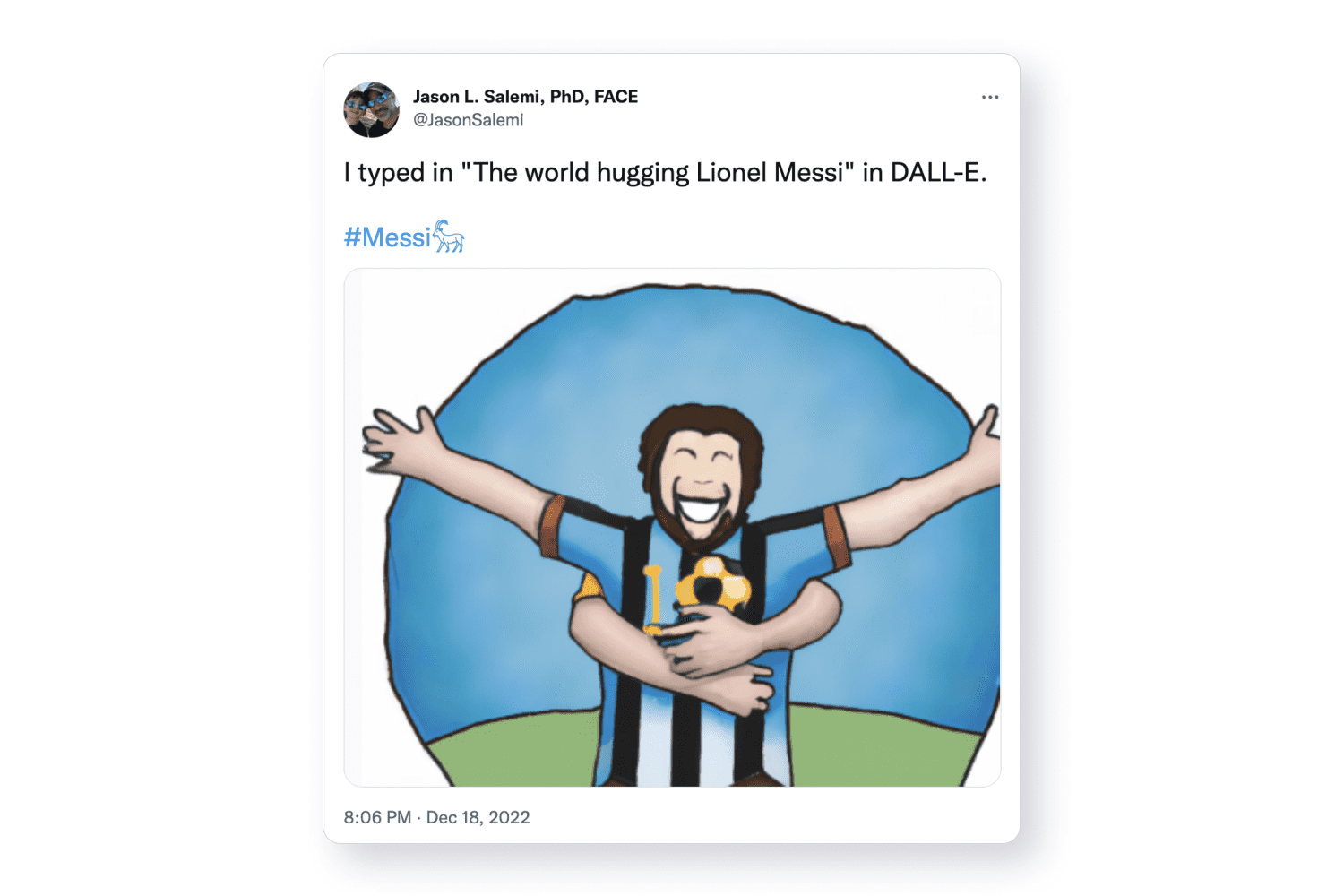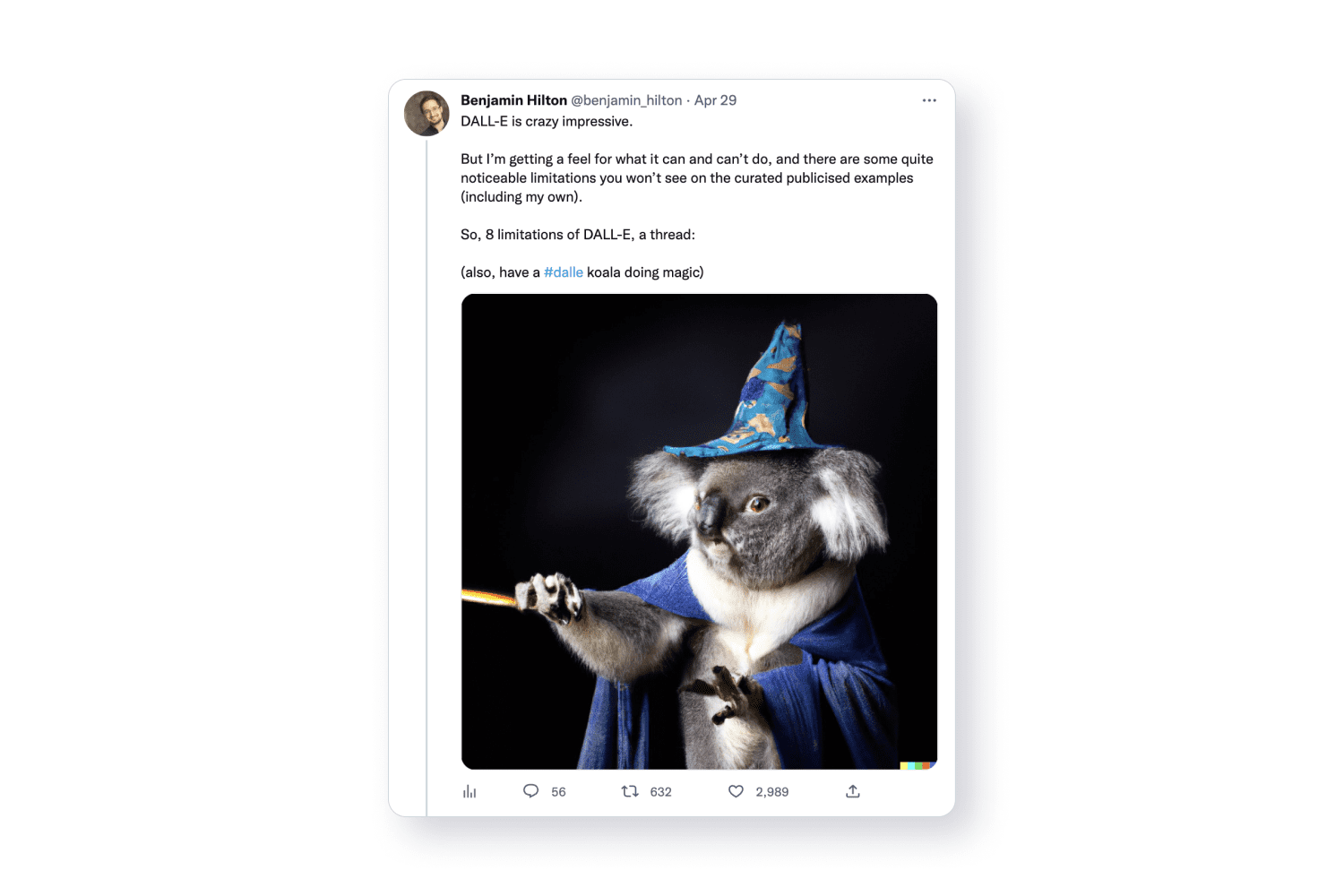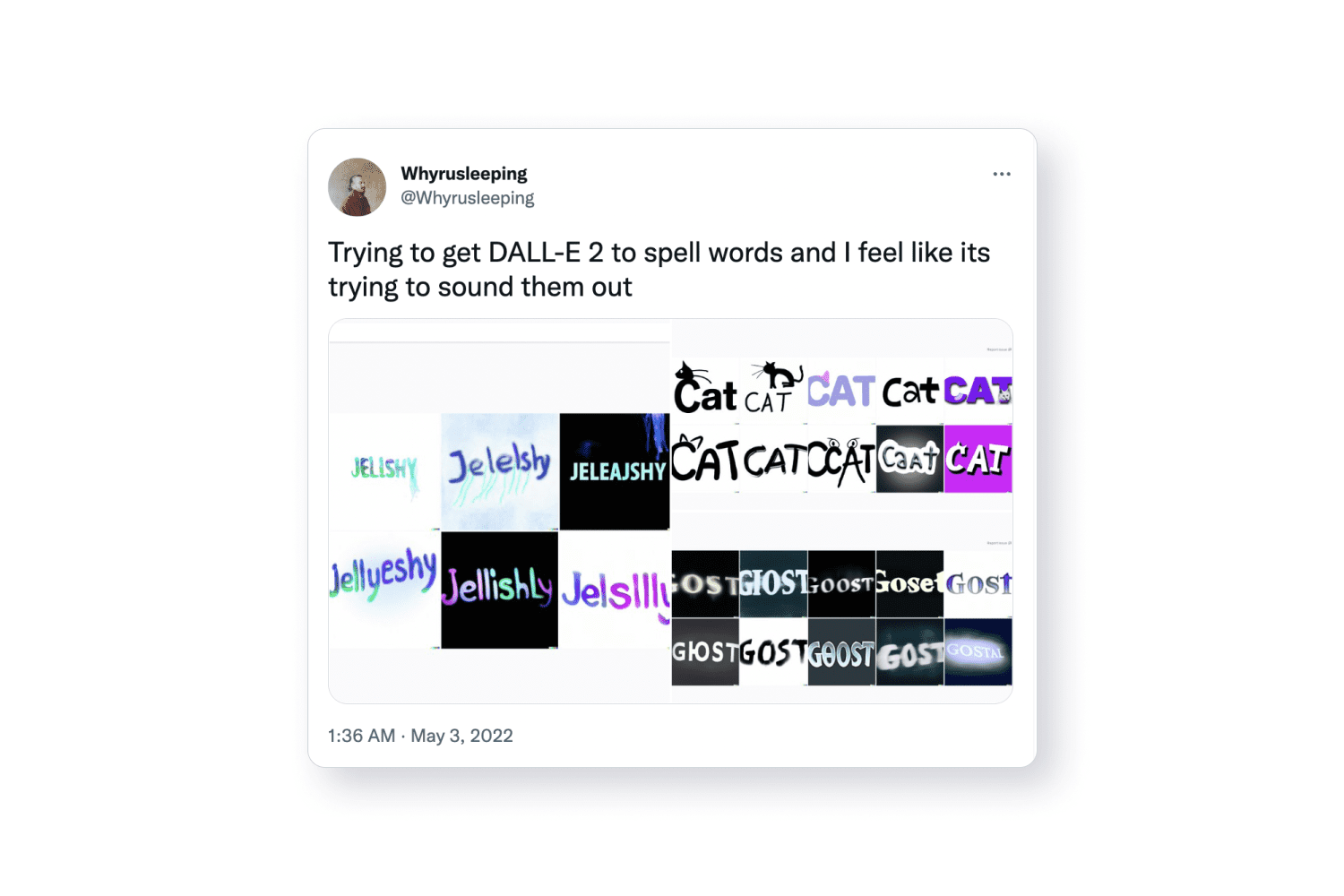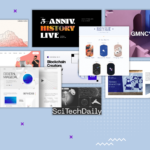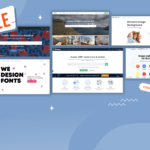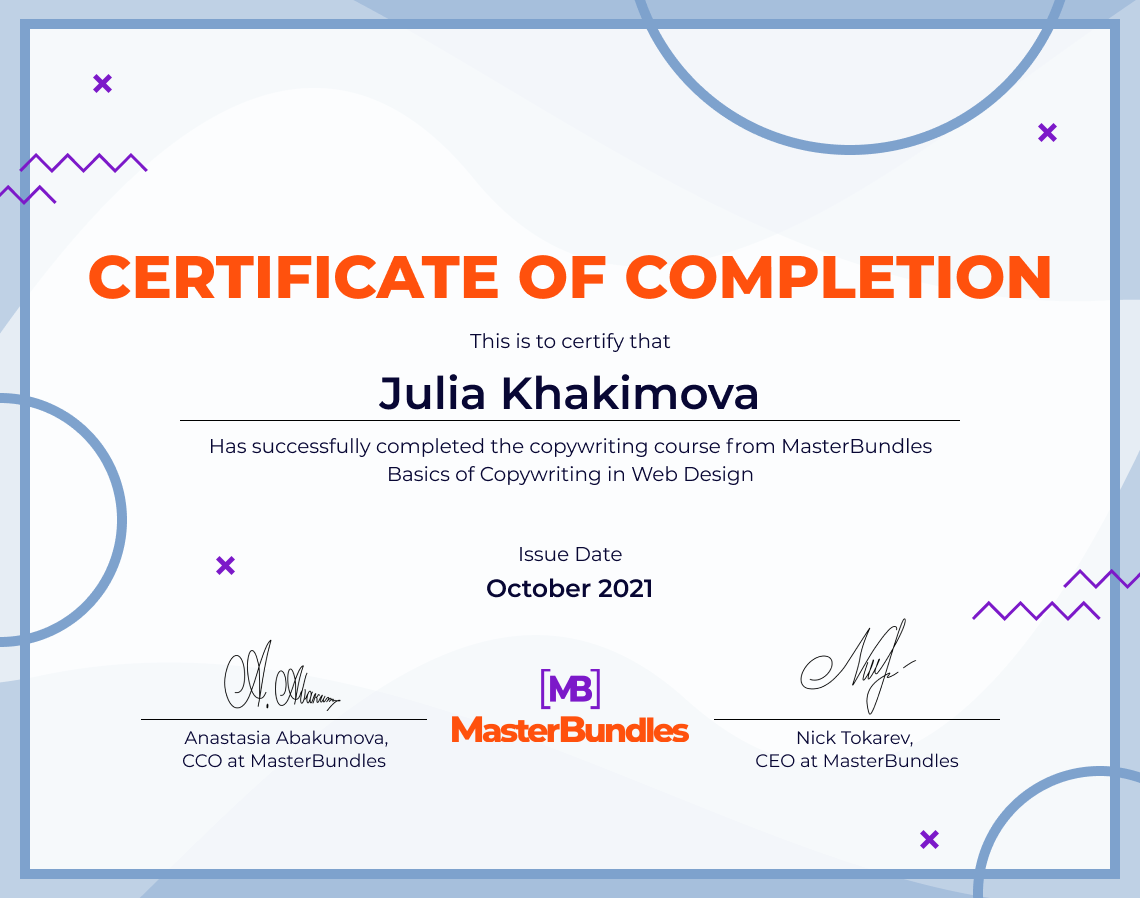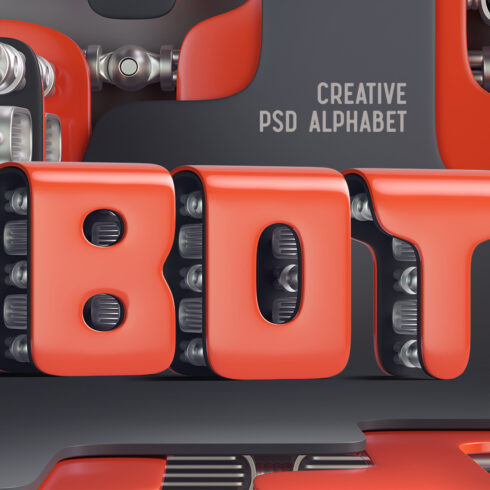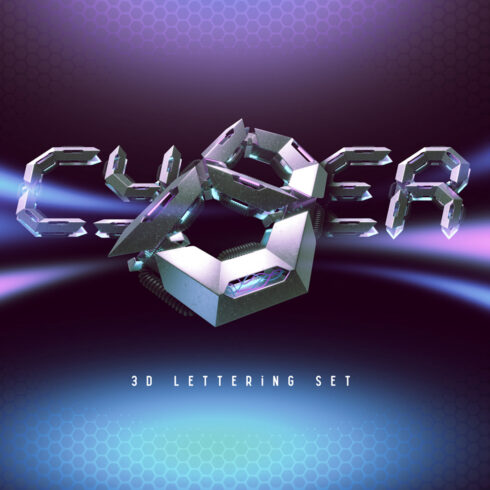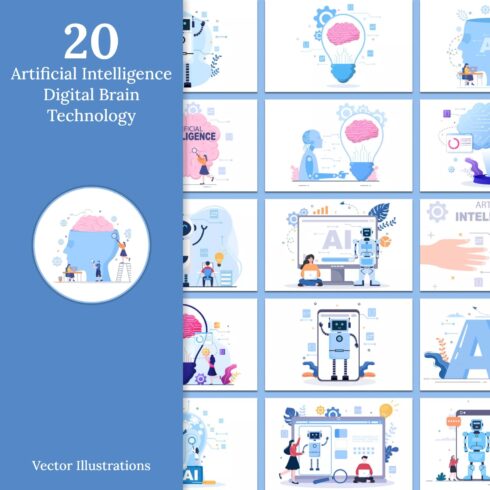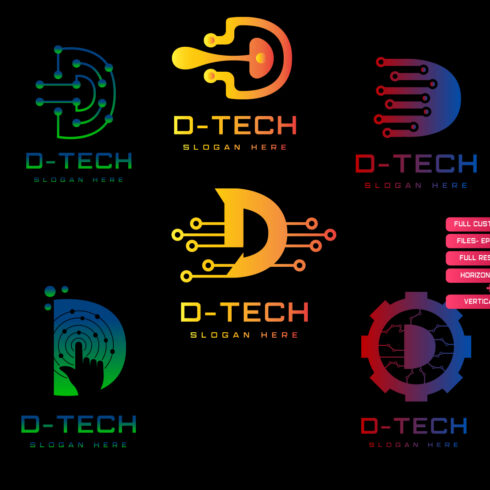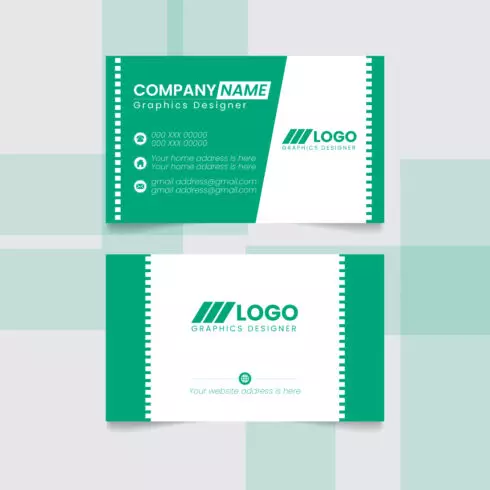AI Design by DALL-E 2: Will Designers Be Replaced by Robots?
I’m here to tell you about DALL-E 2 – the most accurate AI design system that transforms text queries into images in a few seconds.
This machine learning algorithm can “draw” anything that crosses your mind, be it your wildest ideas or an unrelated mish-mash of creatures and objects. The second iteration of DALL-E excelled in text-to-image interpretation up to the point when it made everyone wonder if human creativity could be replaced by machines.
More to say, there’s a clear confirmation of DALL-E 2 underlying the digital revolution in art and design right now. Two months after the AI system by OpenAI was introduced to the world, it was used to create the world’s first AI magazine cover of Cosmopolitan:
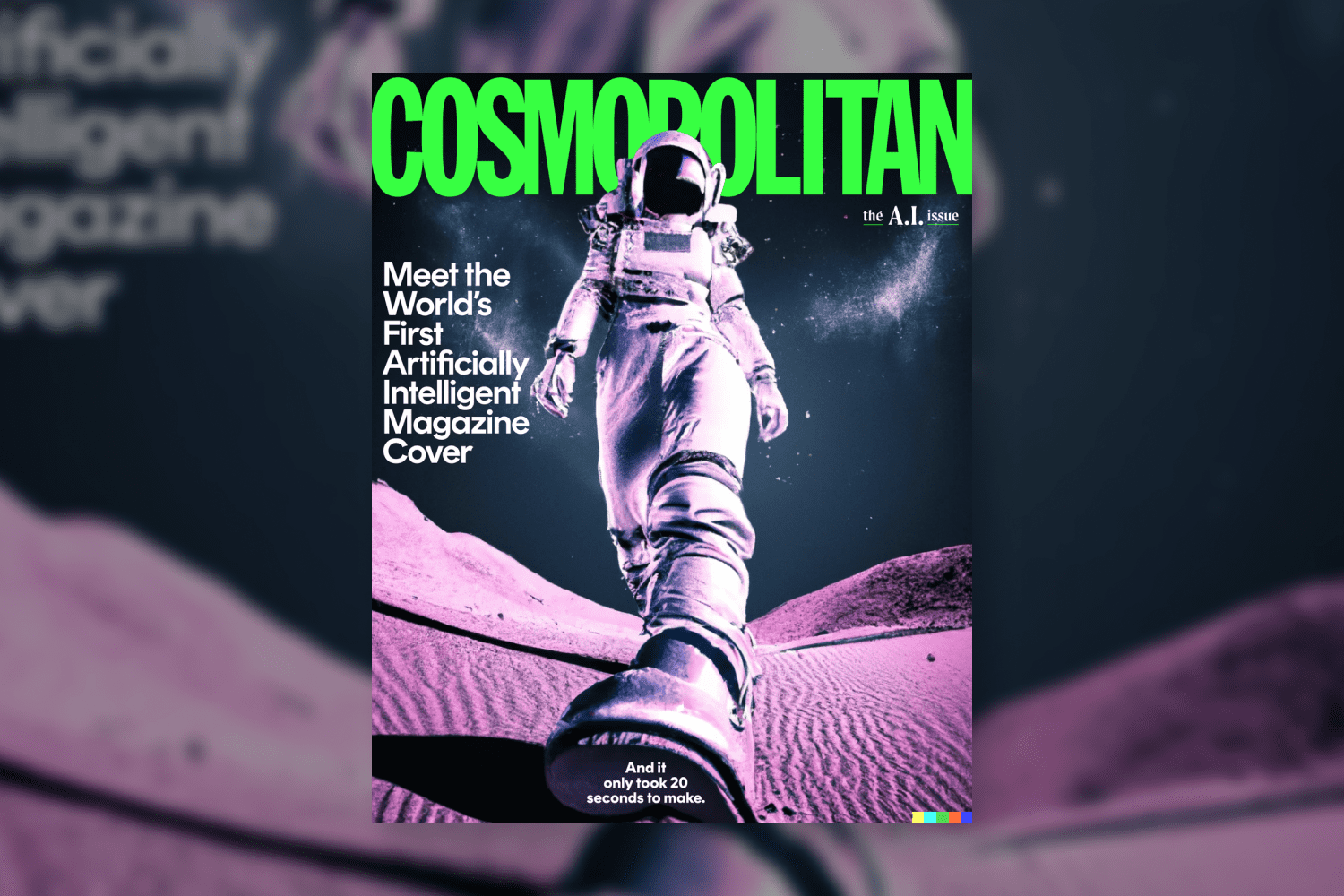
To make things even worse (and it’s only worse for artists and designers), the OpenAI company allowed users to commercialize the created images in whatever possible form.
This begs a big question – can one AI algorithm pose a threat to the existence of such creative careers as an artist and a designer? Will AI take over the world of design?
Spoiler: no worries, designers will have their professional future, yet, with a few details to consider.
Now, let’s do a small deep dive into the DALL-E 2 AI system and why there’s so much buzz around one.
What is DALL-E 2 & Why Its AI Designs Are Fire
DALL-E 2 is a neural network that generates images from a text description.
The DALL-E concept was developed by OpenAI – an artificial intelligence (AI) research company founded by the richest human Elon Musk and his less-known partner Sam Altman. The name DALL-E has a direct reminiscence of Salvador Dali but also, combines the spelling of the Pixar cartoon character WALL-E.
The Dali + WALL-E combination symbolizes two worlds – human & artificial earth algorithms.
The first version of DALL-E released in Jan 2021 was a milestone for computer art. From now on, machine learning algorithms could analyze millions of images as training data to augment existing images with new shapes.
In April 2022, the world was introduced to DALL-E 2 – an updated AI system capable of generating images with unrelated object combinations based on semantic similarity. It features images with a much higher resolution – 1024×1024 pixels (16 times higher in resolution than version one).
How DALL-E 2 Works
DALL-E 2 draws images based on what you tell the algorithm. All you need to do is to set the most specific textual description of the desired image. Then, AI will interpret your query visually based on analyzed examples from the database (at this point, we are talking about hundreds of millions of examples).
The DALL-E 2 text-to-image interpretation works in three steps. In the first stage, the user’s text is encoded in a certain way as a vector of numbers used to create a numerical vector. The final stage is when the AI system uses a numerical vector to generate a final image.
The core goal behind a DALL-E update was to improve the AI design quality.
The second DALL-E iteration indeed creates much more realistic images than its predecessor. Just look at this DALL-E vs DALL-E 2 comparison of “a painting of a fox sitting in a field at sunrise in the style of Claude Monet”:
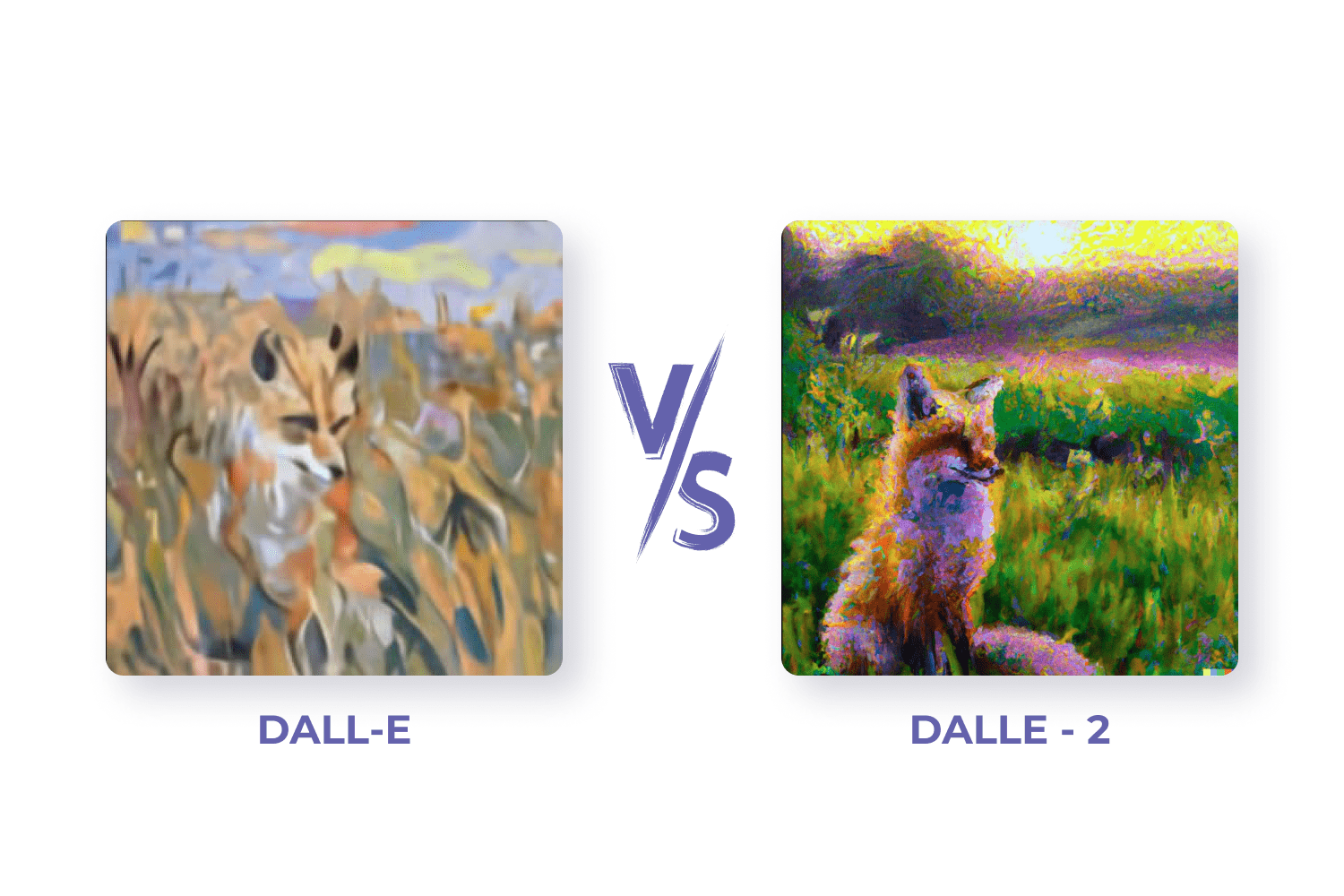
But here comes more. The machine acquired the ability to add or remove details from images while maintaining shadows, textures, and reflections.
Take a view of the DALLE-2 examples below. Two images with the same interior feature a flamingo pool float drawn in different shapes, reflections, and at different angles:
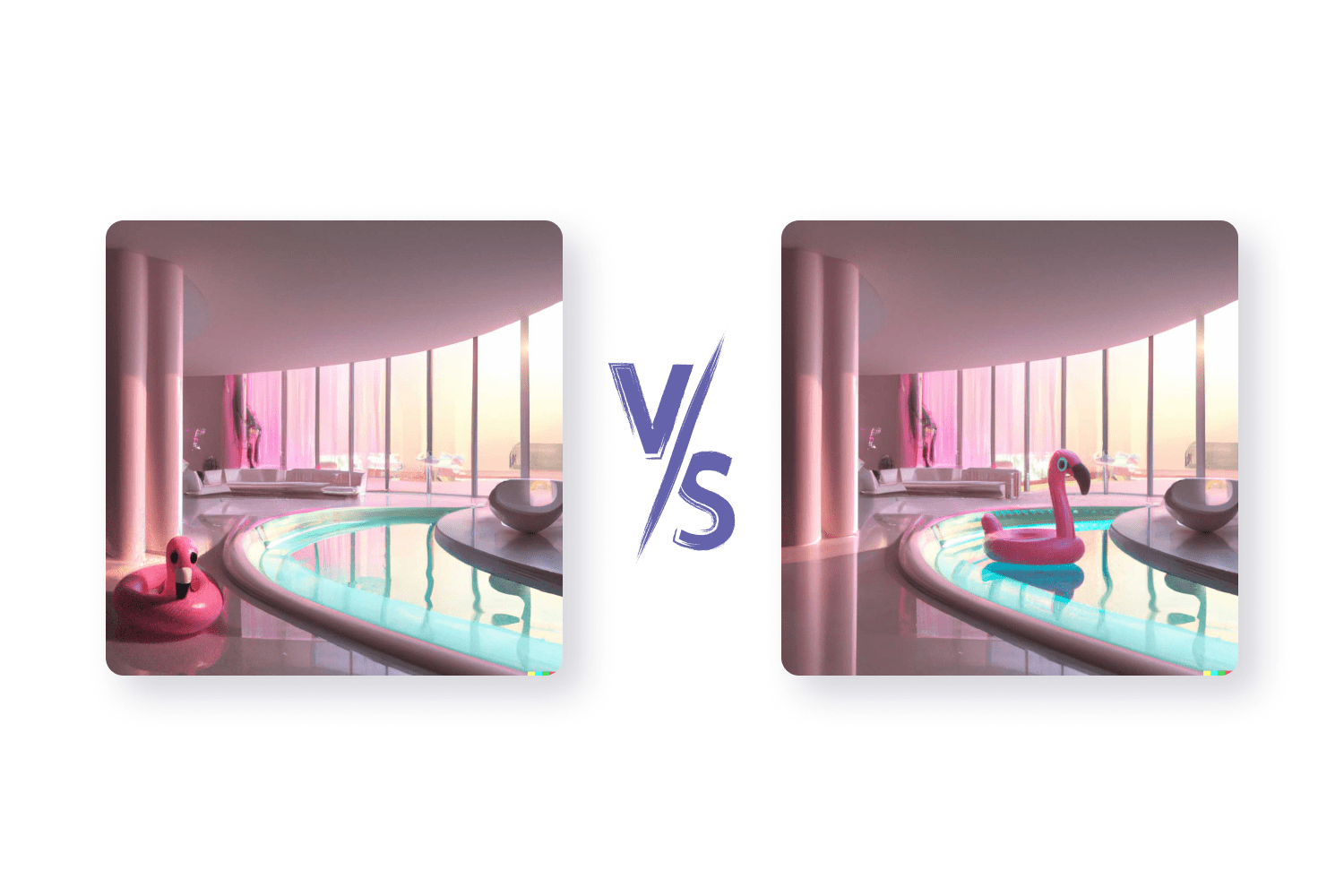
The icing on the DALL-E 2 cake is the fact that it’s insanely good at interpreting various art styles and creating photorealistic images.
Combine any recognizable artist’s style with any image idea, and trust the AI algorithm.
“The fat fluffy cat eating a donut in the style of Caravaggio” – why not?
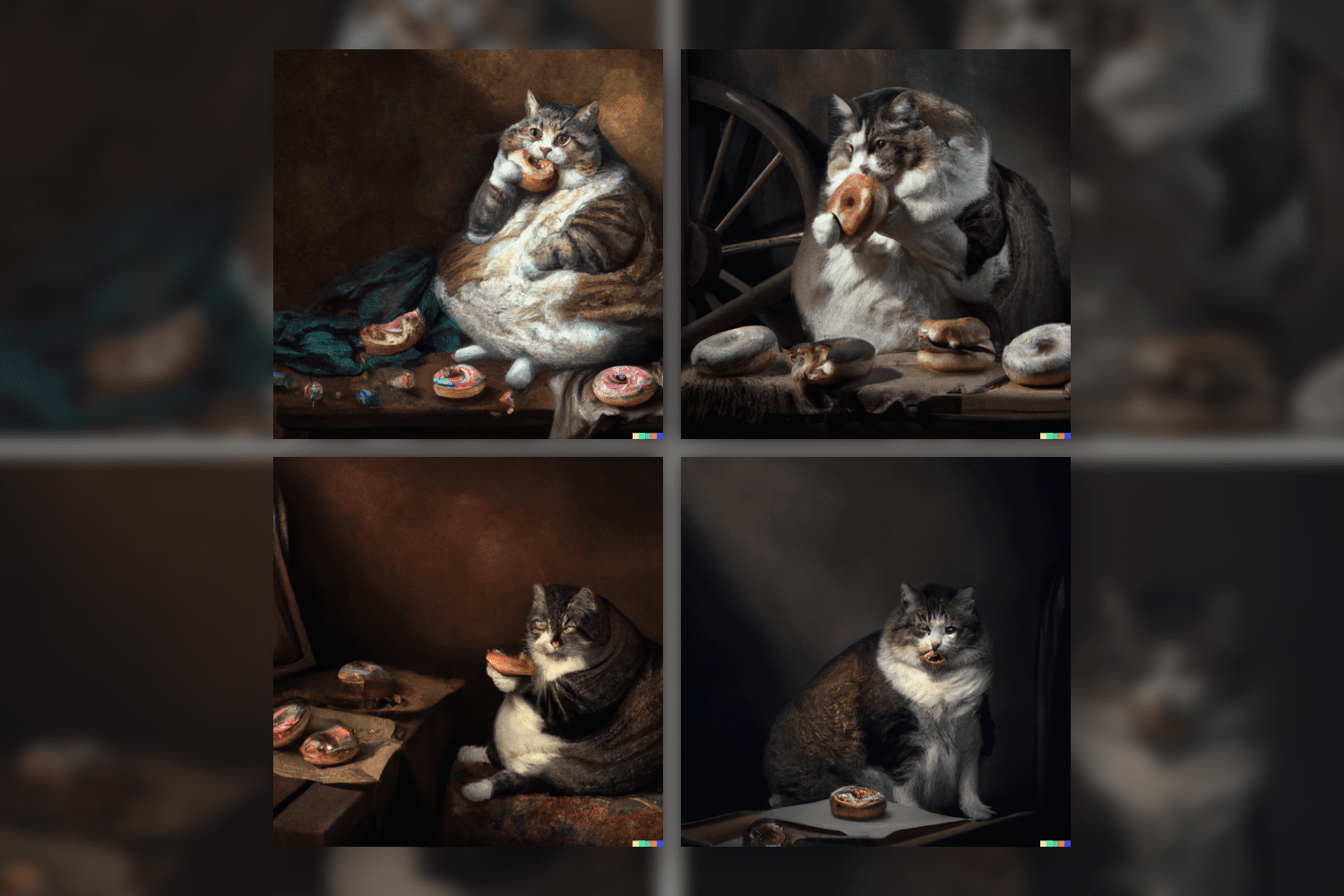
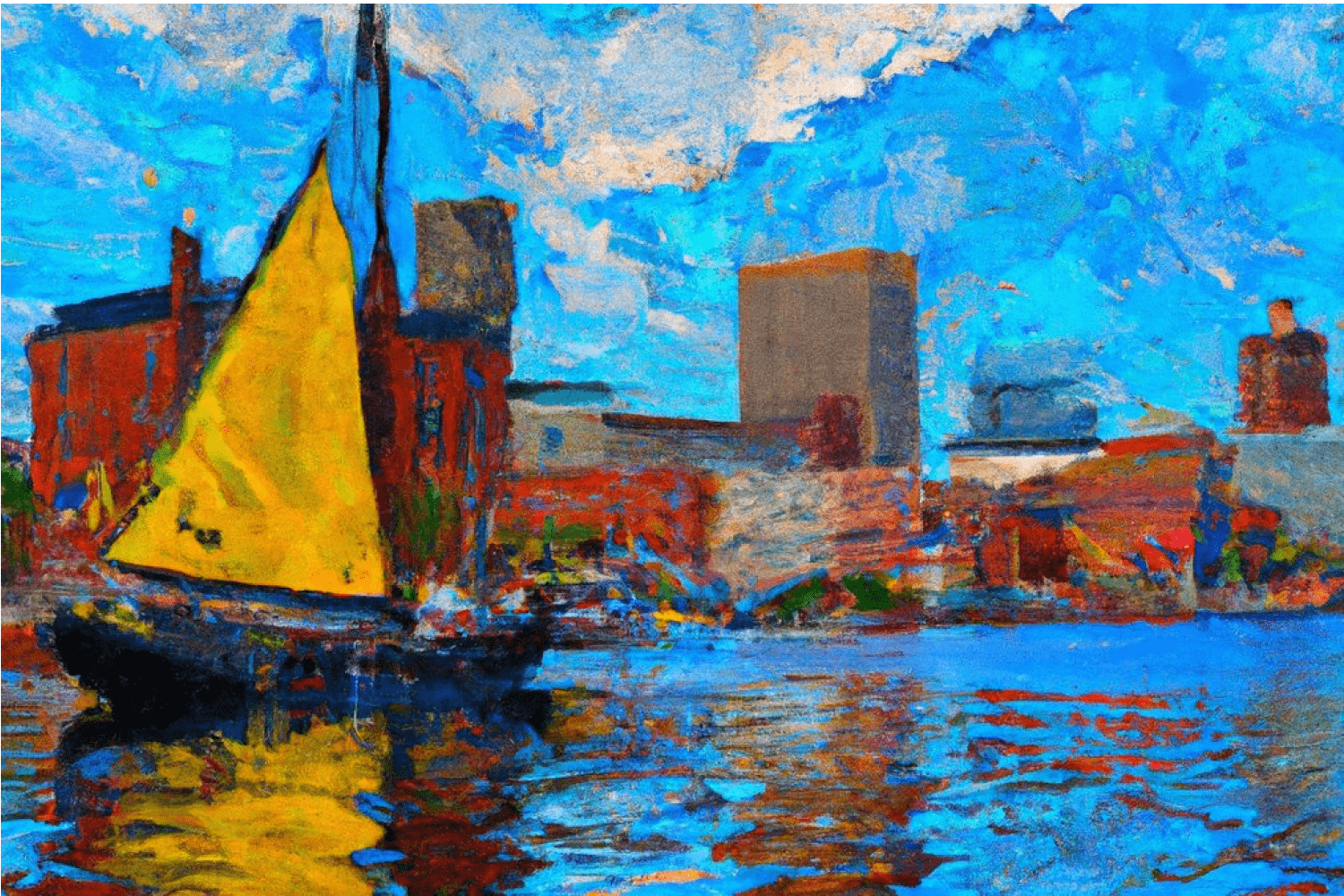


One more example was based on the query of “an astronaut riding a horse in a photorealistic style”. I mean, how should I turn my logic back on after seeing these overly realistic astronauts riding a horse in the middle of … space?
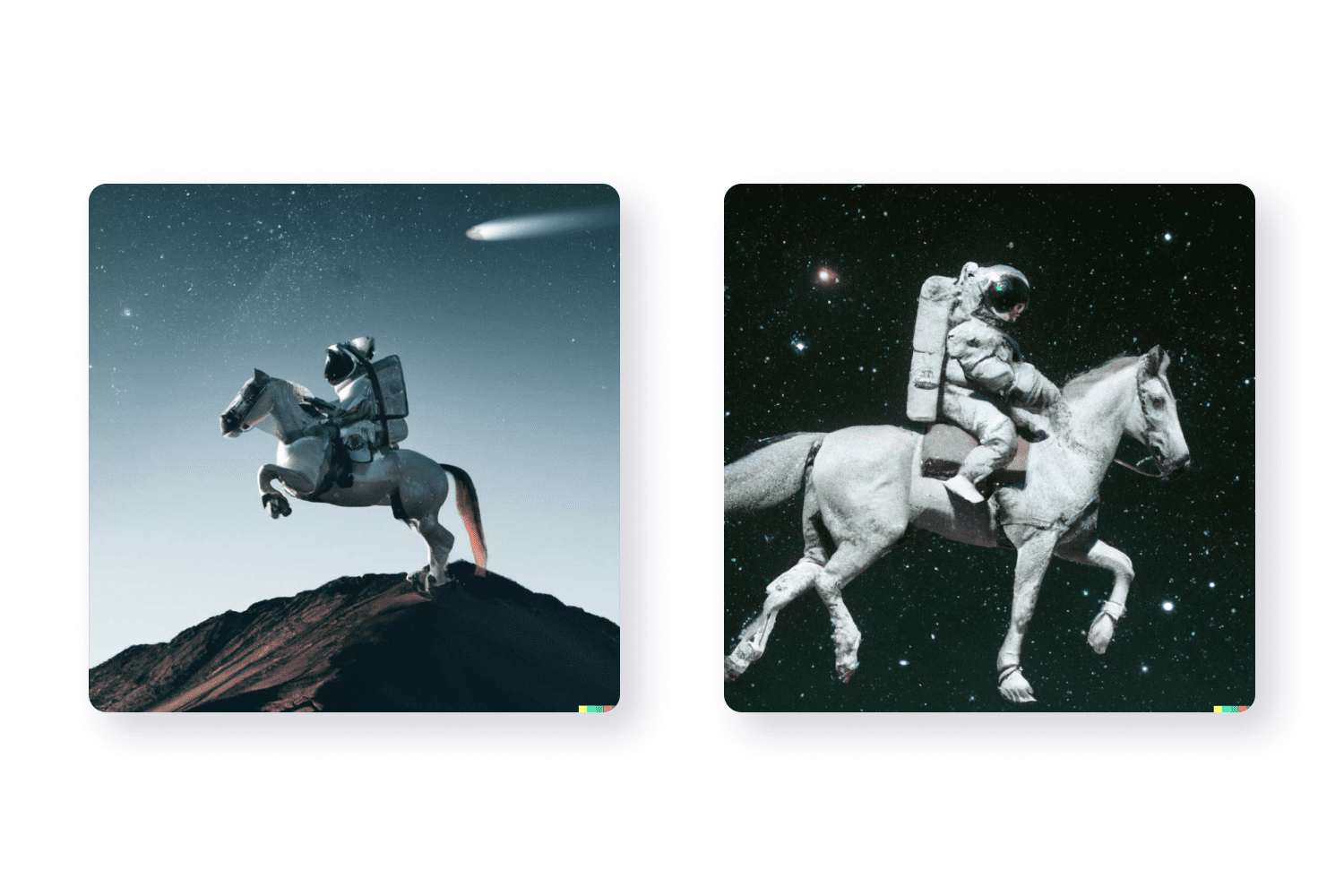
So what we see right now is the reality of something able to bring your craziest imaginary ideas into reality – like an astronaut on a horse in open space or a portal to another universe in a bowl of soup – in a matter of a few seconds. Even the most professional designer could never!
In fact, artificial intelligence lets anyone take the “invisible brush” and “draw” a piece of art with no outstanding artistic or design skills. What’s more, the AI algorithm has the easiest learning curve and a wide scope of application.
At some point, you even start to wonder why we weren’t introduced to this technology earlier. After all, AI by DALL-E 2 kills the game in every way possible… or it does not?
Is There Anything DALL-E 2 Can’t Do?
Sadly (or luckily – up to you), the rapid DALL-E 2 excellence over version 1 still does not make it a perfect tool.
For instance, users found out that the AI system is poor at counting. If you enter the query “5 red apples”, DALL-E 2 will unlikely draw the exact number of apples in the image, and instead, include a random number of ones:
Source: Twitter
According to many users, DALL·E 2 is also lost at portraying too many details under a complex request.
Below is a user’s attempt to retrieve an image for a complex query: “a young dark-haired boy resting in bed, and a grey-haired older woman sitting in a chair beside the bed underneath a window with the sun streaming through, Pixar style digital art”:
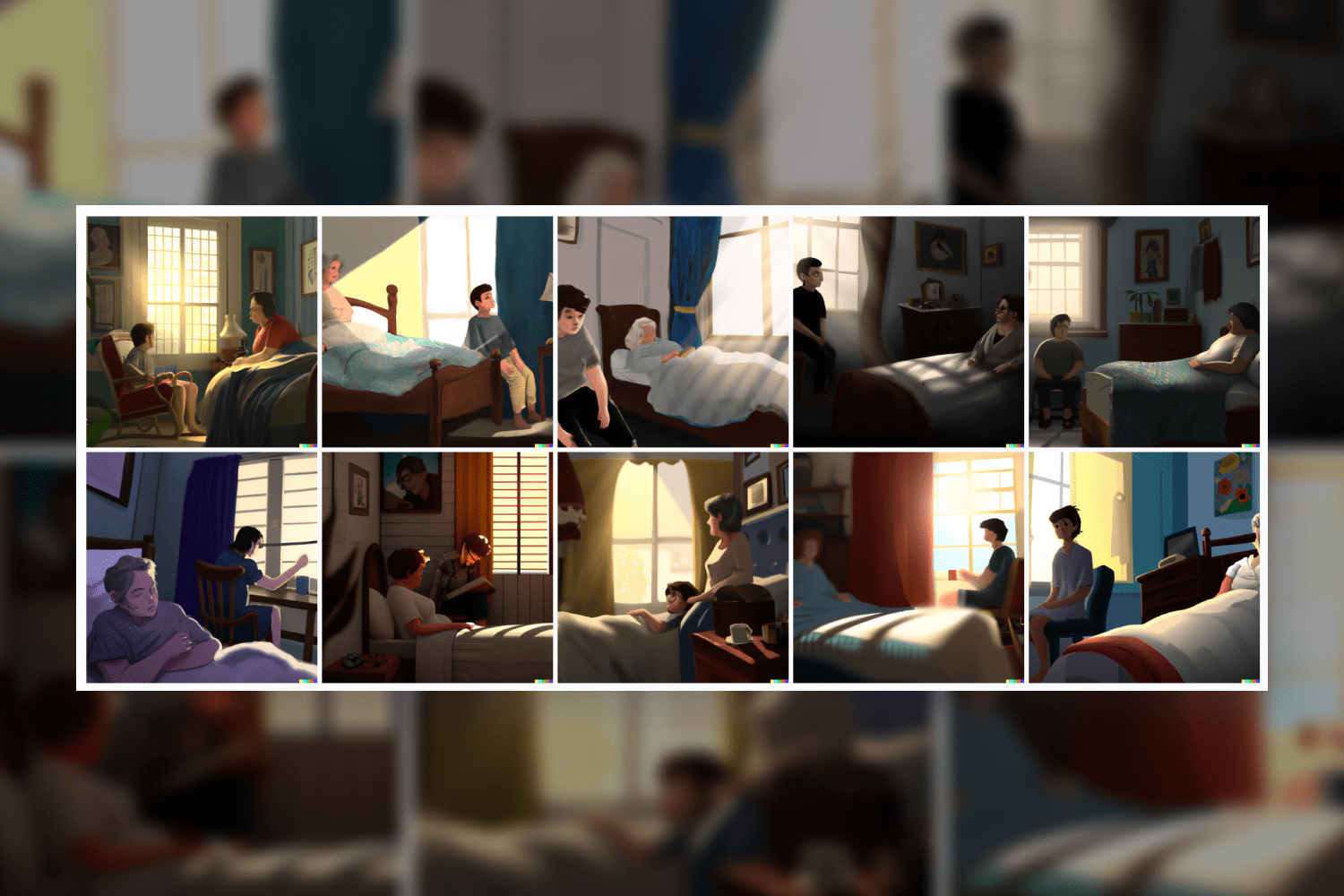
One more significant remark to criticize DALLE-2 is its inability to recreate human faces in detail, especially when it comes to portraits.
And we get it. OpenAI bewares celebrity deepfakes or images of famous people for the greater good. But in many cases, the face model restriction does not let you render images with plausible human faces as their centric element:
What’s more, it appears to change character appearances even when it is obvious that AI “knows” a certain movie or TV show. It may recreate a perfect landscape but will barely do well in “facing” the character:
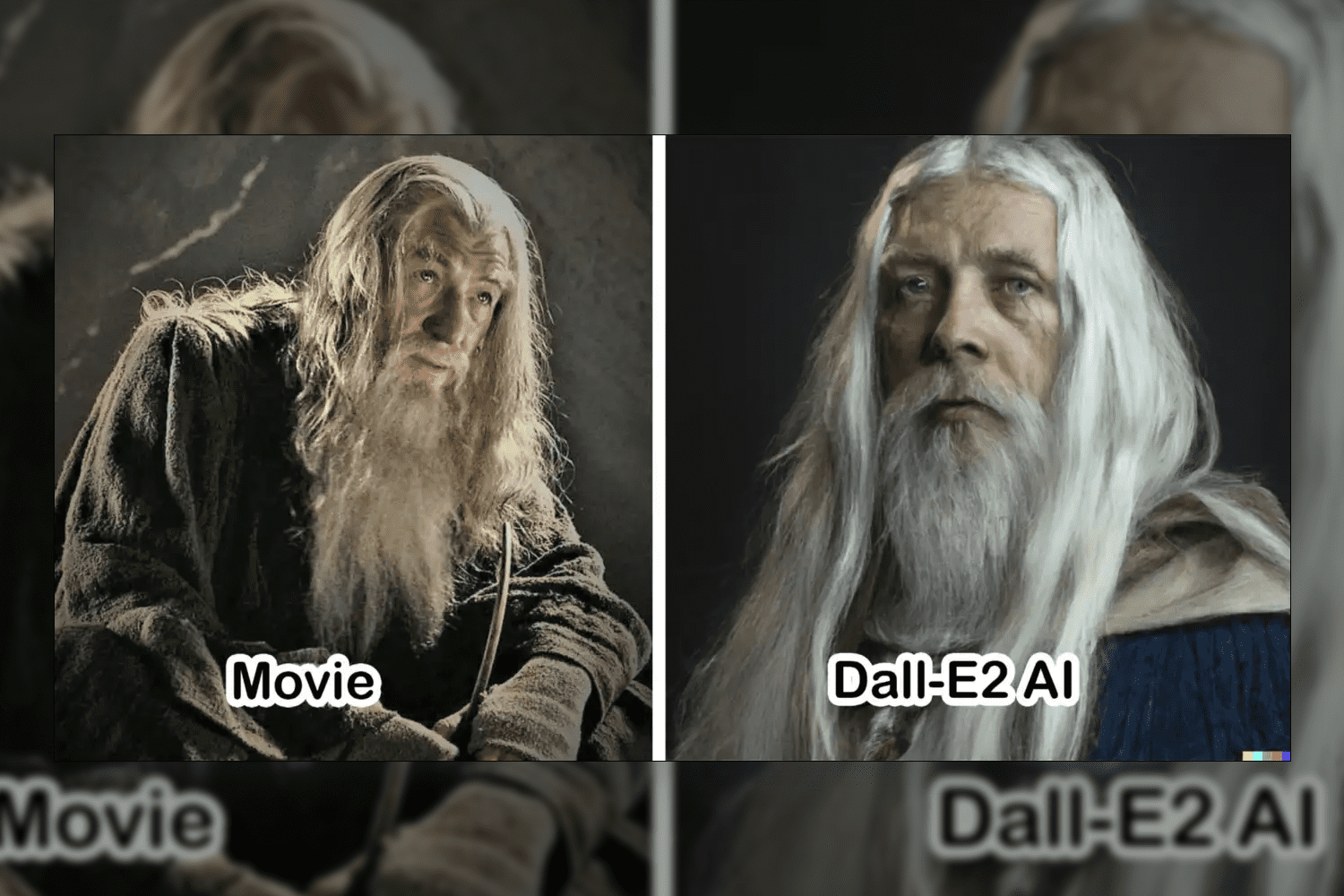
Source: Medium
The good news, however, is that DALL-E 2 developers finally allowed to edit the faces of real people in September 2022.
Now, this is the last but my favorite thing DALL-E 2 creators better work on ASAP. It turns out the text-to-image AI system is incapable of producing text. What a joke, huh?
Although AI produces recognizable English letters (maybe, even Chinese calligraphy) and a letter order closer to English spelling, don’t expect AI to be literate at writing:
Not being able to spell even 3-letter words even makes people dive into Reddit conspiracy theories. What if DALL-E 2 can’t spell on purpose? That’s one secret they’ll never tell, xoxo.
How Can You Test DALLE-2?
Recently, DALL-E 2 has removed its waitlist and become accessible to everyone except for some countries where the software remains unavailable.
After the sign-up, users acquire 50 free credits, and then + 15 free credits on a monthly basis. One credit equals to either one image, image model, or “inpainting” and “outpainting” feature (editing the content of an image or expanding an image beyond its existing boundaries).
Extra credits can be purchased in blocks of 115 for $15 (convince me this isn’t an affordable price for a chance to test the Artificial Intelligence design)
OpenAI reports that about 1.5 million DALL-E users generate more than 2 million images every day.
So, Does AI Design Stand in the Way of Your Design Career?
Up until now, humanity was skeptical about AI reaching such a level of excellence that it may jeopardize the jobs of creatives. Visual design is a challenging niche, and one may not imagine how machines can surpass a skilled human designer in their original style and sense of emotion.
Should we sound the alarm after DALL-E 2 stepped up the game?
Not really.
Even OpenAI defines DALL-E 2 as “a beginning point for creatives, something that saves time in the creating process.”
Users of the neural network found it helpful for boosting their creativity, not replacing it.
Benjamin von Wong, an installation and sculpture artist, states that DALL-E boosted his productivity. “This is a great tool for people like me who can’t draw,” says Von Wong, who uses the tool to explore ideas that can then be turned into art. “Instead of sketching out concepts, I can just generate them with various cue phrases.”
Aza Raskin, an artist, and designer, used open-source software to create a music video for a fellow musician Zia Cora, and the video was shown at a TED conference in April.
Perhaps, the biggest change that AI image generators will bring will be the dramatic expansion of the pool of people able to create and experiment with art and illustration.
“We can say with optimism that this is a revolution in communication,” says Tom White, a New Zealand-based artist whose work is dedicated to artificial intelligence. “Even those who aren’t creatively inclined can use such tools to create and share creative drawings,” – according to White.
No doubt the future is here in front of our screens. There surely be more quality algorithms like DALL-E 2 able to render not only images but videos based on text descriptions. The world will change in front of our eyes, so whoever has access to computing resources will be able to “draw” and create designs.
Should we assume that future artists and designers will rely on powerful computers and AI graphic design software instead of brushes and canvas? We surely do.
Summary: DALL-E 2 Can Alter the Concept of Design But It WON’T Replace Designers
Artificial intelligence and machine learning will play a key role in the future of graphic design as tools such as DALL-E 2 – already available to the masses – can easily produce multiple compelling and unexpected results from a single query.
They help brands, empower people with creative ideas but with a lack of art/design skills, and give creatives a chance to step away from the canvas.
But as good as DALL-E 2 is at creating images, it’s not here to sell a story. So far, it will not provide the most personalized drawing piece that makes a 100% match to the brand’s DNA. It’s clear that technologies may evolve with time but for now, humanity cannot replace designers with their unique perspectives and experience.
On a side note, if you are worried that AI will take away your job – it is time to take care of an extra source of a passive income! Our sincere recommendation is to become a vendor on MasterBundles, upload products, and start earning on our marketplace!
Do you think AI can replace human web and graphic designers? Share your thoughts in the comments – let’s discuss!
Some Awesome Videos About AI Design
What is Dalle 2? The Dark Side of Ai Art Breakthrough Explained
DALL·E 2 is a new AI system that can create realistic images and art from a description in natural language. It’s terrifying.
How does DALL-E 2 actually work?
DALL-E 2 has arrived in the AI world with a bang. It is one of the best generative models we have seen to date. But how does this magical model work? In this video, we will take a look into the architecture of DALL-E 2, to understand the working principles.
FAQ
Here are a few frequently asked questions about the AI design
What is an AI design?
AI design is a visualized piece (illustration, video, etc) generated by the AI machine learning system. Artificial intelligence is often used in graphic design to streamline the creative process.
How do you become an AI designer?
AI designers are experts that develop solutions for simple and effective data collection in collaboration with engineers. This has nothing to do with AI graphic design by a neural network.
To become an AI designer, you must be knowledgeable in programming languages (with Python, Java & R as the most crucial ones), analytics, signal processing techniques, and neural network architectures.
Can AI replace designers?
AI may alter the concept of the design but it surely won’t be able to replace designers as a profession. According to many users, artificial intelligence is yet too weak to produce outstanding designs based on the most accurate text prompt straight from a human mind. Users would rather use AI to boost inspiration and creativity, especially if those people lack art or design skills.
What job AI can't replace?
AI can’t compete with human-oriented careers, including psychologists, caregivers, HR managers, law specialists, teachers, marketing specialists, etc. Even UX / graphic designers with their unique skillset and personal style approach will always surpass the algorithm of a machine.
What are your concerns?
Thanks for your response!
Disclosure: MasterBundles website page may contain advertising materials that may lead to us receiving a commission fee if you purchase a product. However, this does not affect our opinion of the product in any way and we do not receive any bonuses for positive or negative ratings.
This article is inspired by and relies on the following references:
- https://www.cosmopolitan.com/lifestyle/a40314356/dall-e-2-artificial-intelligence-cover/
- https://techcrunch.com/2022/07/20/openai-expands-access-to-dall-e-2-its-powerful-image-generating-ai-system/
- https://39669.cdn.cke-cs.com/rQvD3VnunXZu34m86e5f/images/d72dd2b4e4f289a8cc054d400ba8ba4ba9f5c0a37c5a6593.png/w_2094
- https://techcrunch.com/2022/09/19/openai-begins-allowing-users-to-edit-faces-with-dall-e-2/
